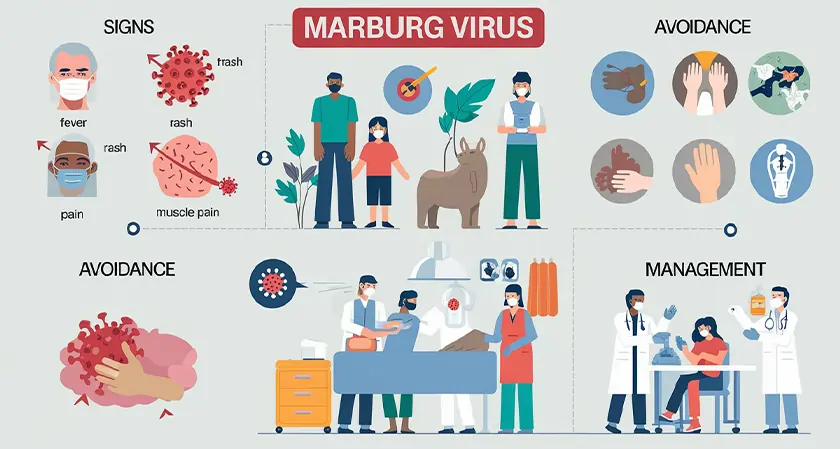Home Industry Healthcare Recognizing the Marburg Virus:...
Healthcare

CIO Bulletin
04 October, 2024
In the recent increase in Marburg virus reported cases is worrying, especially as some are already confirmed. All possible countries and health policies require a greater degree of surveillance and containment efforts as well as education to abate the disease by every means possible.
Causing fever and bleeding in the body, the Marburg virus is highly pathogenic. Due to the recent emergence of epidemics in various countries including America and the rest, it’s important to learn about the aetiology, clinical aspects, routes of transmission and prevention of this infection for the healthy well-being of individuals.
Characteristics of Marburg virus became known for the first time in 1967 after outbreaks identified in Germany and Serbia. This Marburg Virus again belongs to the family of filoviruses which also comprises of Ebola virus. With recent developments of virus in the U.S., preparedness and awareness become much needed.
Applied Overview of the Marburg Virus; Clinical Features, Modes of Transmission, Control Measures, and Therapeutics
1. Symptoms of Marburg Virus
The Marburg virus often takes 5 to 10 days to create symptoms once someone is exposed. Fever and chills, headache, muscle ache, fatigue may be early signs. More severe symptoms do develop as the illness progresses, including bleeding from the gums, nose, or internal organs, jaundice, confusion, agitation, organ failure.
Spread of the Marburg virus occurs by direct contact of the bodily fluids of infected persons, including blood, saliva and sweat. Field exposure to infected animals, most commonly fruit bats or nonhuman primates, or handling contaminated materials, such as needles or medical equipment, may also transmit it.
3. Prevention of Marburg Virus
Prevention strategies is necessary that are effective to control the Marburg virus. Good measures of this are to practice rigorous hygiene and sanitation, notably in healthcare locations, stay away from infected men and animals, implement fixed quarantine arrangements in the course of outbreaks and educate communities about the risk of transmission and prevention approaches.
4. Treatment for Marburg Virus
There is no specific antiviral treatment exists for the Marburg virus. Although supportive therapy is essential, including dehydration therapy to correct severe dehydration, treatment to relieve symptoms including pain relief and control of bleeding and blood transfusion for patients with severe hemorrhagic manifestations.
5. Public Health Measures
By developing rapid identifications, isolation and treatment options, as well as vaccination research and deployment in high risk areas, public health organizations have an important role in managing these outbreaks of Marburg virus.
6. Ebola and Marburg Virus
While they are both in the same family and have the same sort of symptoms, they have different epidemiology. Many of these differences are important to understand to design effective public health responses to these problems.
New Marburg virus updates in terms of research and public health recommendations have been released. It is possible to fight back against this terrible disease and help protect the communities. Anyone who has any signs or symptoms, or has come into contact with a sick person, must see a doctor without delay.
Conclusion
In order to avoid any future outbreaks and in order to help the communities better, it is important to be aware and understand the Marburg virus. especially due to recent related occurrences. Knowing the signs and symptoms, how the disease spreads and how it can be treated are some of the things that can help one take responsibility for public health.
FAQs
1. What makes the Marburg virus more threatening than its counterparts?
It is a severe threat to the general public when an epidemic occurs due to high ease of transmission and high case fatality ratio.
2. What is done to prevent one from catching the Marburg Virus?
One must maintain proper sanitation, refrain from contact with sick persons and keep abreast of the situation in respect to the domain of Marburg Virus.
3. Is there any vaccine developed for Marburg disease?
No vaccines have yet been approved for wide spread distribution, though such a product is currently being pursued.
4. What are the early symptoms of Marburg virus disease, and how do these symptoms develop?
First signs consist of high fever, remittent fever with chills, severe headache, muscle ache onset occurring between five to ten days post contact.
5. How does Marburg virus relate to Ebola virus?
They both belong to the category of infectious and lethal viruses; yet differ in how they spread and in their epidemiological characteristics.







